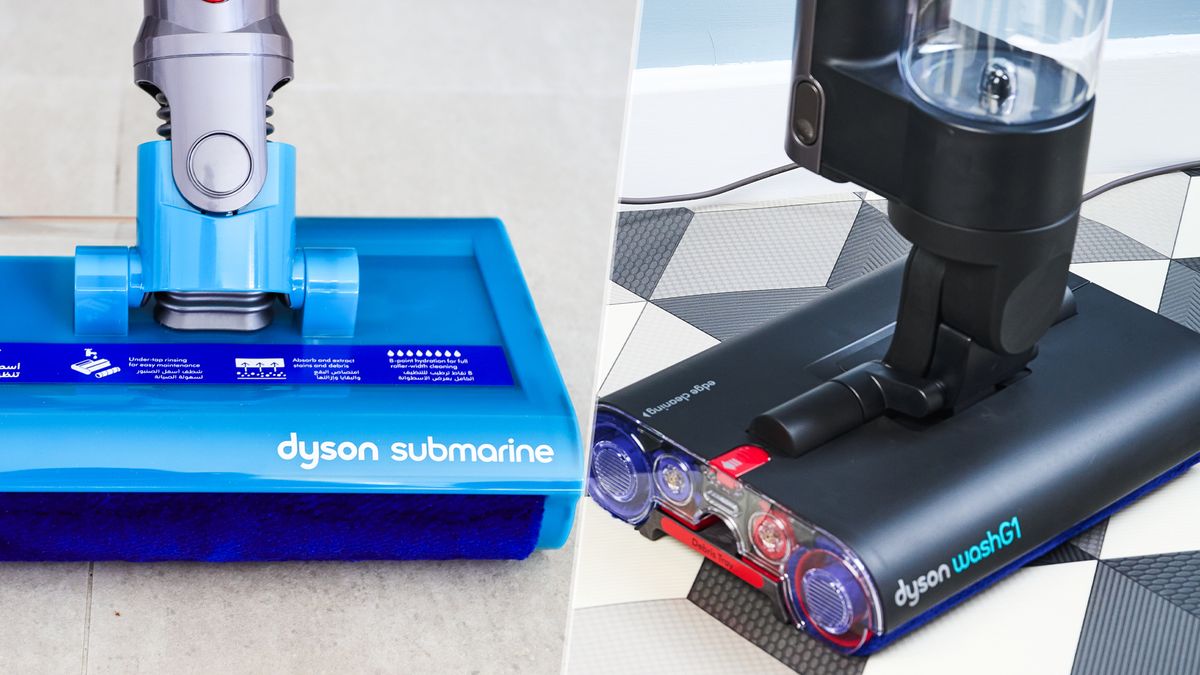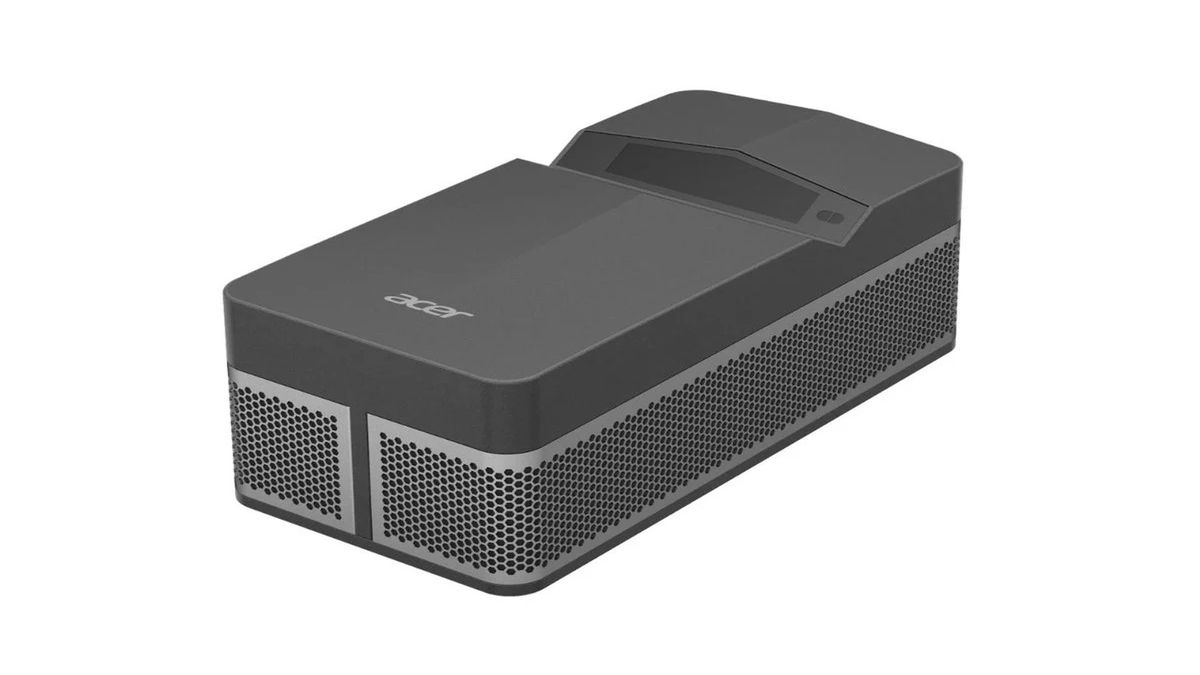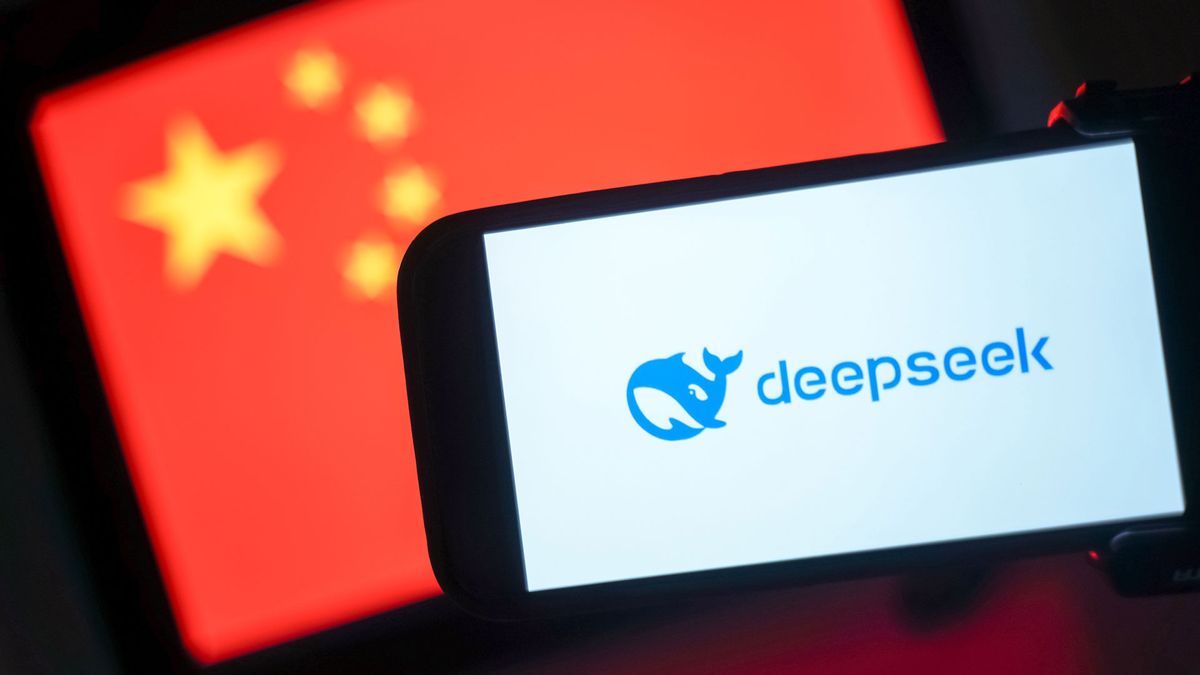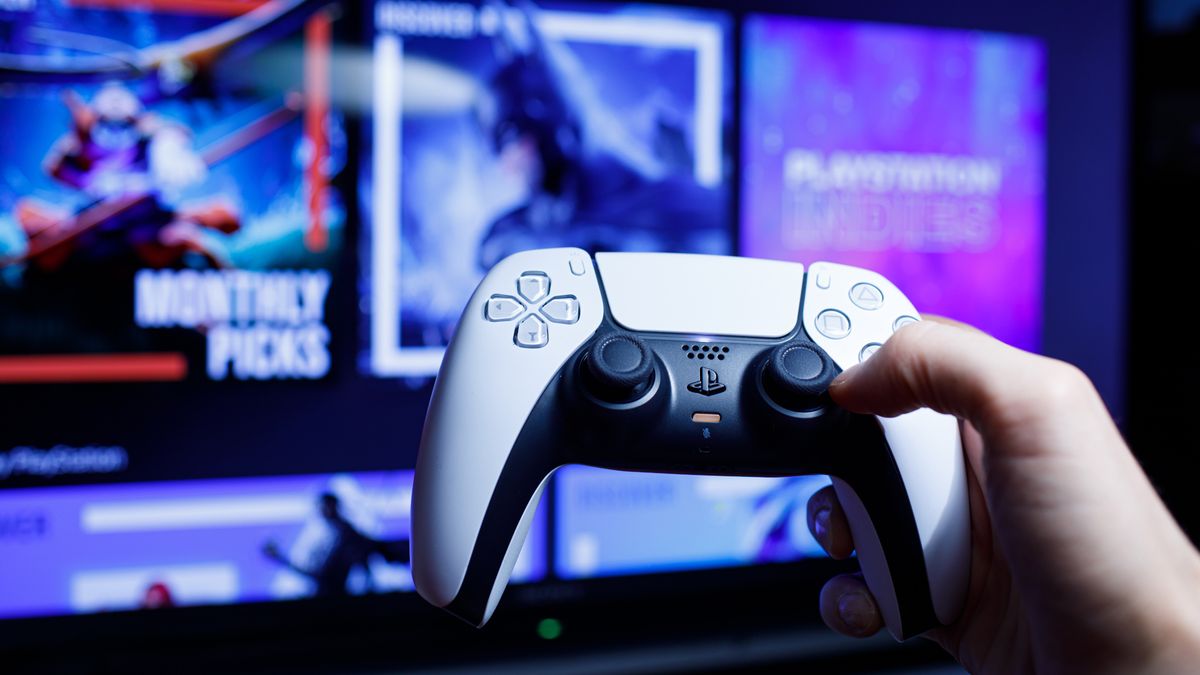The Dyson V15s Submarine and WashG1 are both capable of mopping your floors. In fact, they’re the only models in Dyson’s floor-care lineup that can do so. In this article, we’ll compare the two, so you can see which model will suit your needs best.
The V15s Detect Submarine launched in 2023 and is a hybrid vacuum and mop. It’s a V15 Detect vacuum, with an extra floorhead just for mopping. The vacuuming capabilities are advanced, but mopping functionality is relatively basic, and both are operated via a trigger that needs to be continually depressed. You can get the full low-down in our Dyson V15s Submarine review.
In contrast, the WashG1 is a dedicated wet cleaner. It launched in 2024 and offers more advanced mopping capabilities: there are multiple mop modes to choose from; it will separate liquid from solid waste for easier disposal; and it has self-cleaning capabilities. It’s operated via a single-press button. It can’t vacuum at all, though. Find out more in our full Dyson WashG1 review.
Which model you go for will depend on your needs. The V15s Detect Submarine is great if you’re short on space, and want a two-in-one appliance for vacuuming and mopping. It’s also perhaps a better choice if you only have a bit of hard floor, because the water tanks are far smaller than those of the WashG1. However, be aware that a design flaw means it’s very easy to spill dirty water back onto your newly clean floors.
Those with lots of hard floor or wanting to deal with bigger or more challenging spillages would be better opting for the WashG1; but it’s a dedicated model that can’t clean your carpets, too.
Both are premium priced appliances, with the WashG1 the cheaper of the two. However, when you factor in that the V15s Submarine also comes with all the capabilities of the (not cheap) V15 vacuum, it appears to be slightly better value for money.
That’s the short version; read on for a more in-depth look at how the Dyson V15s Submarine vs WashG1 compare.
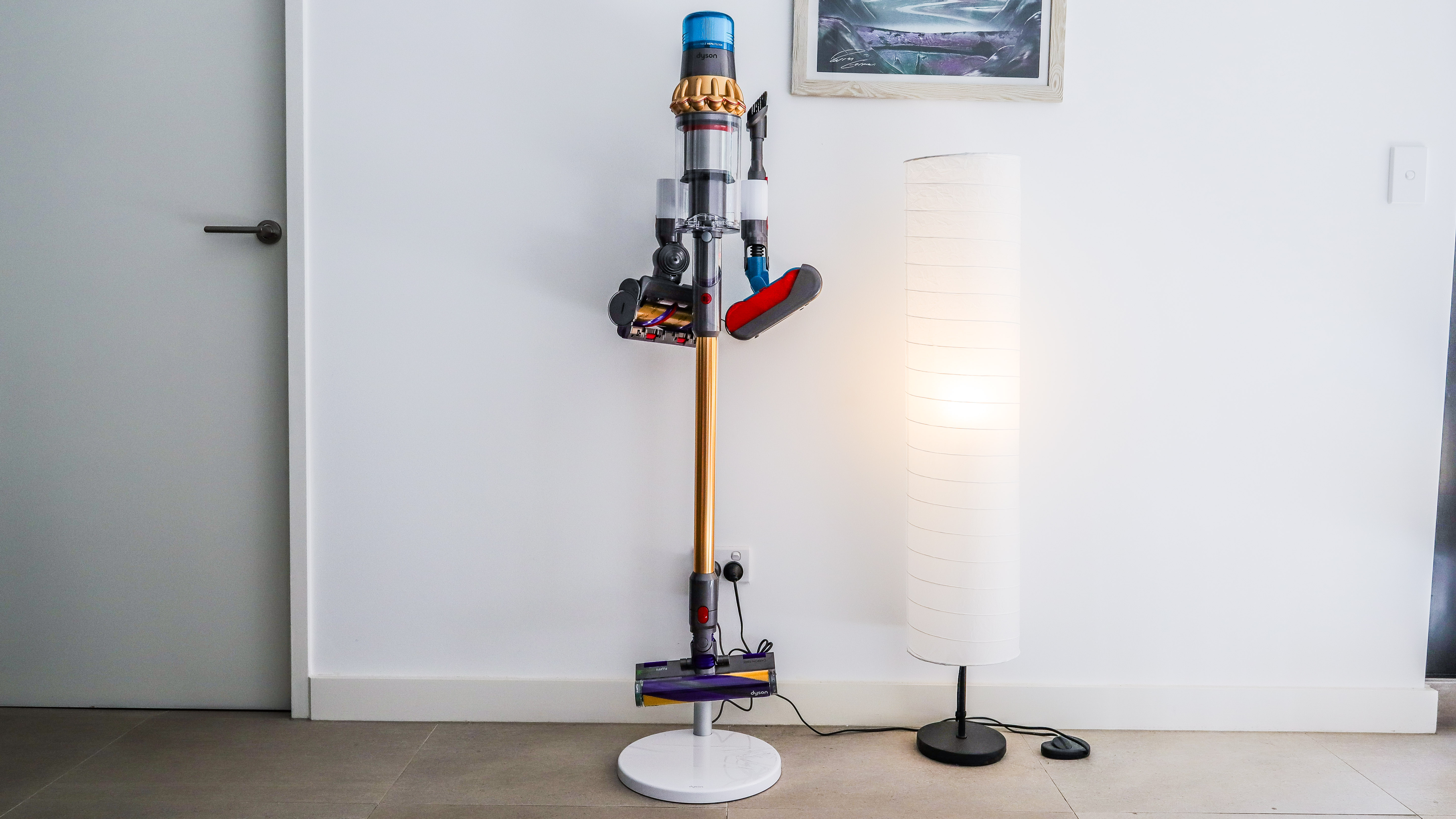
Dyson WashG1 vs V15s Detect Submarine: price
- V15s Submarine is more expensive, at $949.99 / £799.99 / AU$949
- WashG1 is cheaper at $699.99 / £599.99 / AU$1,549
- Both are premium appliances – Submarine is perhaps better value
In the US, the WashG1 has a list price of $699.99, while the V15s Detect Submarine is $949.99 at full price.
In the UK, it’s £599.99 for the WashG1 and £799.99 for the V15s Detect Submarine.
Finally, shoppers in Australia can get the WashG1 for AU$949. There are a couple of different V15s options here – the standard model is called the Absolute and costs AU$1,549, and there’s an upgraded option with features borrowed from the Gen5detect vacuum, for AU$1,649.
Those are all the list prices when purchasing direct from Dyson – it doesn’t account for deals or differences in price when shopping via third-party retailers.
The V15s costs a fair bit more in all territories, but you’re perhaps getting better value for money with the V15s, because you’re also getting all the functionality of the V15 vacuum. Prices for the V15 on its own start from $749.99 / £649.99 / AU$1,449.
Note that the Submarine floorhead isn’t compatible with any other stick vacuums, even the standard V15 – the software has been rewired in the V15s to support vacuuming and mopping.
Dyson WashG1 vs V15s Detect Submarine: specs
| Header Cell – Column 0 | WashG1 | V15s Detect Submarine |
|---|---|---|
| Size (H x L x W): | 44.9 x 8.9 x 11.8in / 114 x 22.5 x 30cm | 49.1 x 10.6 x 2.1in / 124.6 x 26.8 x 25.3cm |
| Weight (empty): | 10.8lbs / 4.9kg | 8.4lbs / 3.8 kg |
| Clean water tank volume: | 1L | 0.3L |
| Dirty water tank volume: | 0.8L | 0.36L |
| Max runtime: | 35 mins | Unknown |
| Extra tools: | None | Various, depending on model, including vacuum floorheads and detail tools |
Dyson WashG1 vs V15s Detect Submarine: design
- V15s Submarine is a V15 vacuum with an extra mop floorhead
- Dyson WashG1 is a dedicated wet floor cleaner; no vacuuming abilities
- WashG1 has larger water tanks and multiple mop rollers
The V15s Detect Submarine looks just like one of Dyson’s newest flagship cordless stick vacuums, with a motor, filter, dust bin, and cyclone array. In fact, that’s exactly what it is – the difference is entirely in the additional mopping floorhead.
The standard version is based on the V15 vacuum. In Australia only, there’s also an upgraded version that’s more similar to the Gen5detect, with a crevice tool integrated into the wand, and more advanced filtration.
The V15s Detect Submarine will typically come with two vacuuming floorheads (plus the separate mop). The Motorbar floorhead is suitable for both hard floors and carpet, and is the head that needs to be attached if you want to use automatic suction adjustment. The Fluffy floorhead is specialized for use on hard floors only, and has a built-in laser to illuminate hidden dirt. You’ll also get a selection of detail tools (the exact bundle, including specific floorheads, will vary by territory, version and retailer, so do double-check before you buy.) All of this means the V15s can be used for a wide variety of vacuum cleaning tasks.
The mop floorhead contains one velvety roller, and clean and dirty water tanks. Unlike most of today’s best wet-and-dry vacuums, there’s no suction when the machine is in mopping mode.
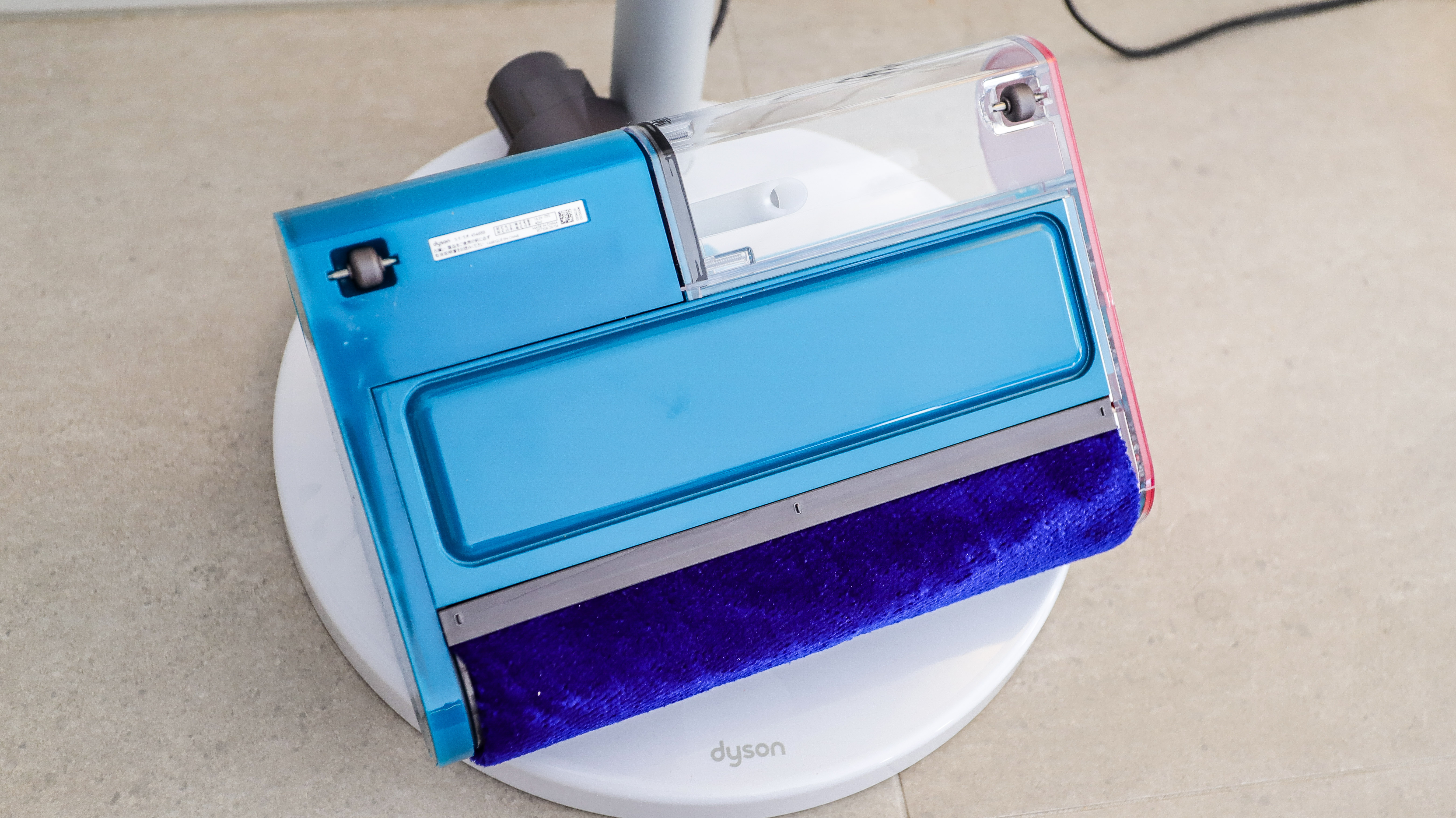
The WashG1 has no vacuuming capabilities (so no suction at all) – and is a tool dedicated to only mopping. The only cleaner head comprises two high-density microfiber rollers for liquid spillages, with a plate that presses into them to squeeze out dirty water. The floorhead also includes secondary rollers with big nylon bristles, designed to tackle solid mess.
A key point of difference is that the WashG1 will separate solid and liquid waste as it cleans. So while the dirty water ends up in the dirty water tank, any solid debris is channeled into a tray that sits in the base of the floorhead, ready to be tapped into the bin. This makes emptying easier and is good news for long-term maintenance.
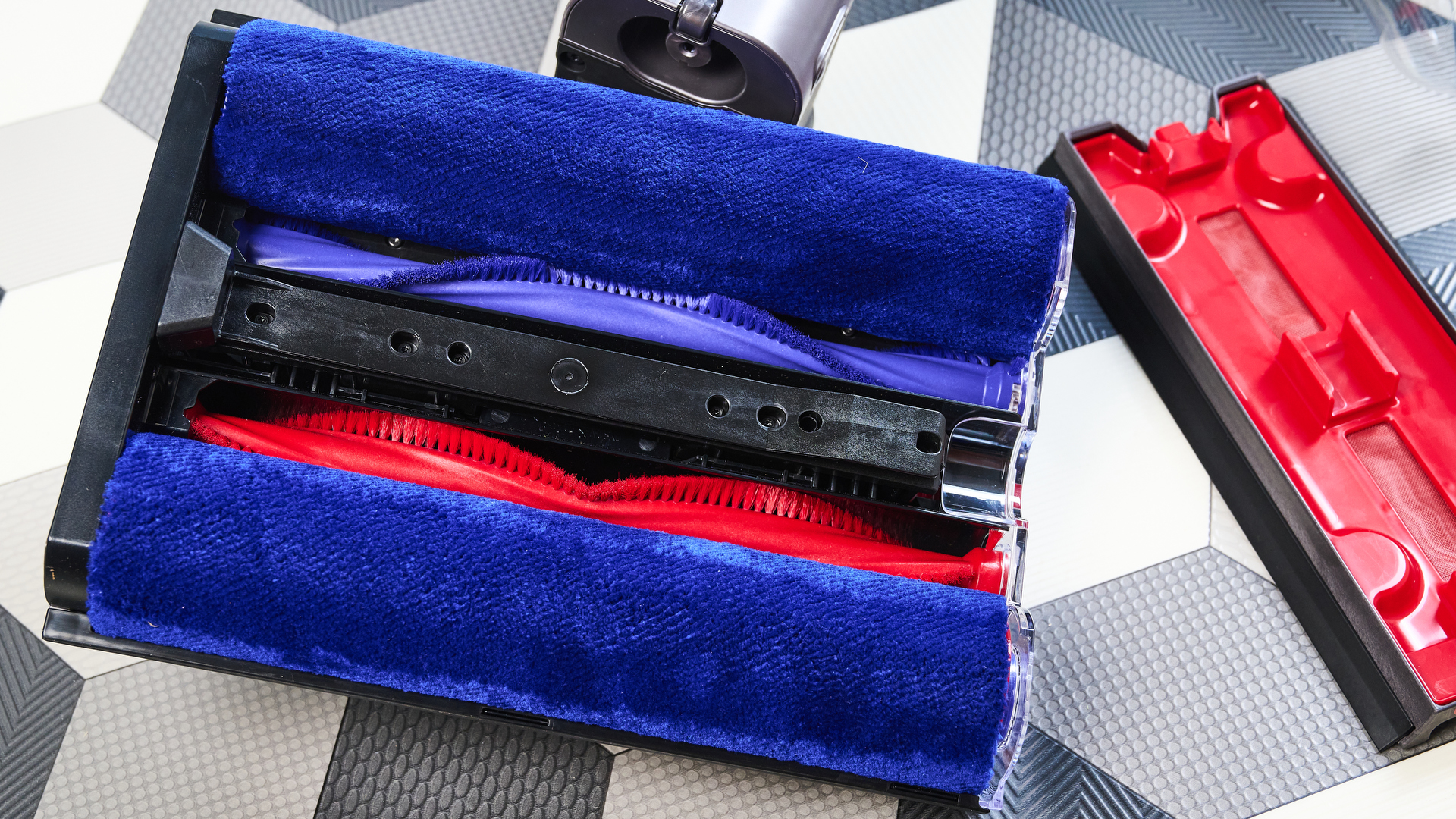
The setup of the clean and dirty water tanks on the V15s Detect Submarine and the WashG1 is quite different, and on balance the latter is much better.
The V15s has a small bottle for clean water, and the tank for dirty water is hidden behind the roller. This dirty water compartment isn’t sealed, so when you’re done mopping and remove the floorhead, you’ll end up sloshing dirty water over your newly cleaned floor.
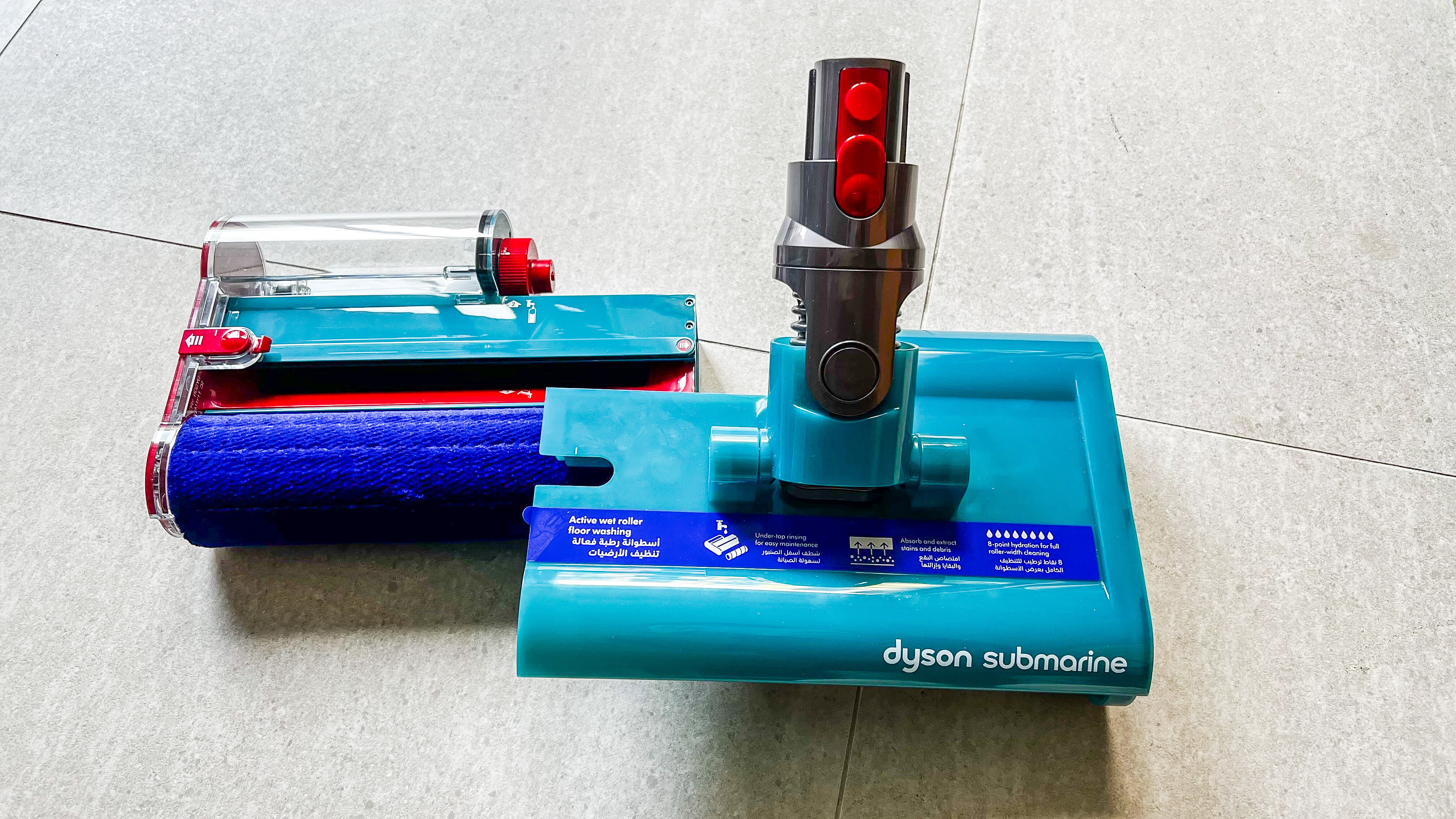
On the WashG1, the dirty and clean water tanks are transparent and mounted on the front of the handle, making them more easily visible and accessible. Dyson also specifically addressed the Submarine’s leaking issue when designing the WashG1. There, each tank is individually sealed with a screw top. I isn’t quite perfect – the caps don’t screw on especially deeply, and on test we found that unless handled carefully, the water inlet could also occasionally leak dirty water. Overall, though, it’s far, far better than on the Submarine.
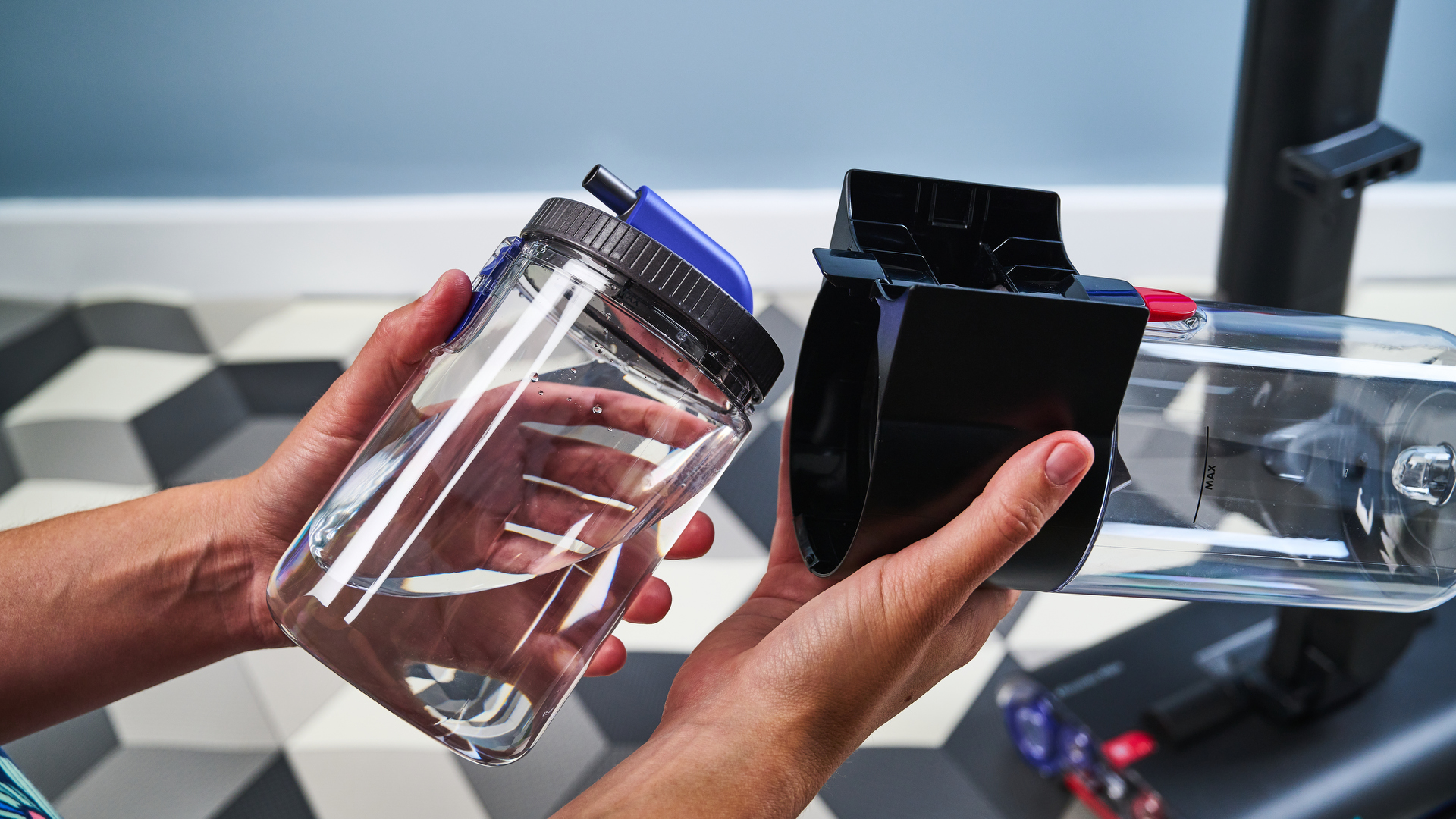
Another thing to be aware of is that the water tanks on the WashG1 are far larger than those on the Submarine. The WashG1 will hold about a liter of clean water at a time, while the Submarine will hold only 300ml. The Submarine will manage roughly a large living room before you’ll need to refill – if you have a number of rooms you want to mop, you’ll get round faster and with fewer interruptions with the WashG1.
Controls and screen
The V15s Detect Submarine is operated by a trigger, which needs to be continually depressed for use, whereas the WashG1 has the far more user-friendly single-press button.
The Submarine has just one cleaning mode, plus there’s no way to choose different water levels (even via the MyDyson app). In contrast, the WashG1 has many: three different hydration modes, alongside a no-water mode and a Max mode. That last one is the wettest of the lot, and is designed for ingrained dirt.
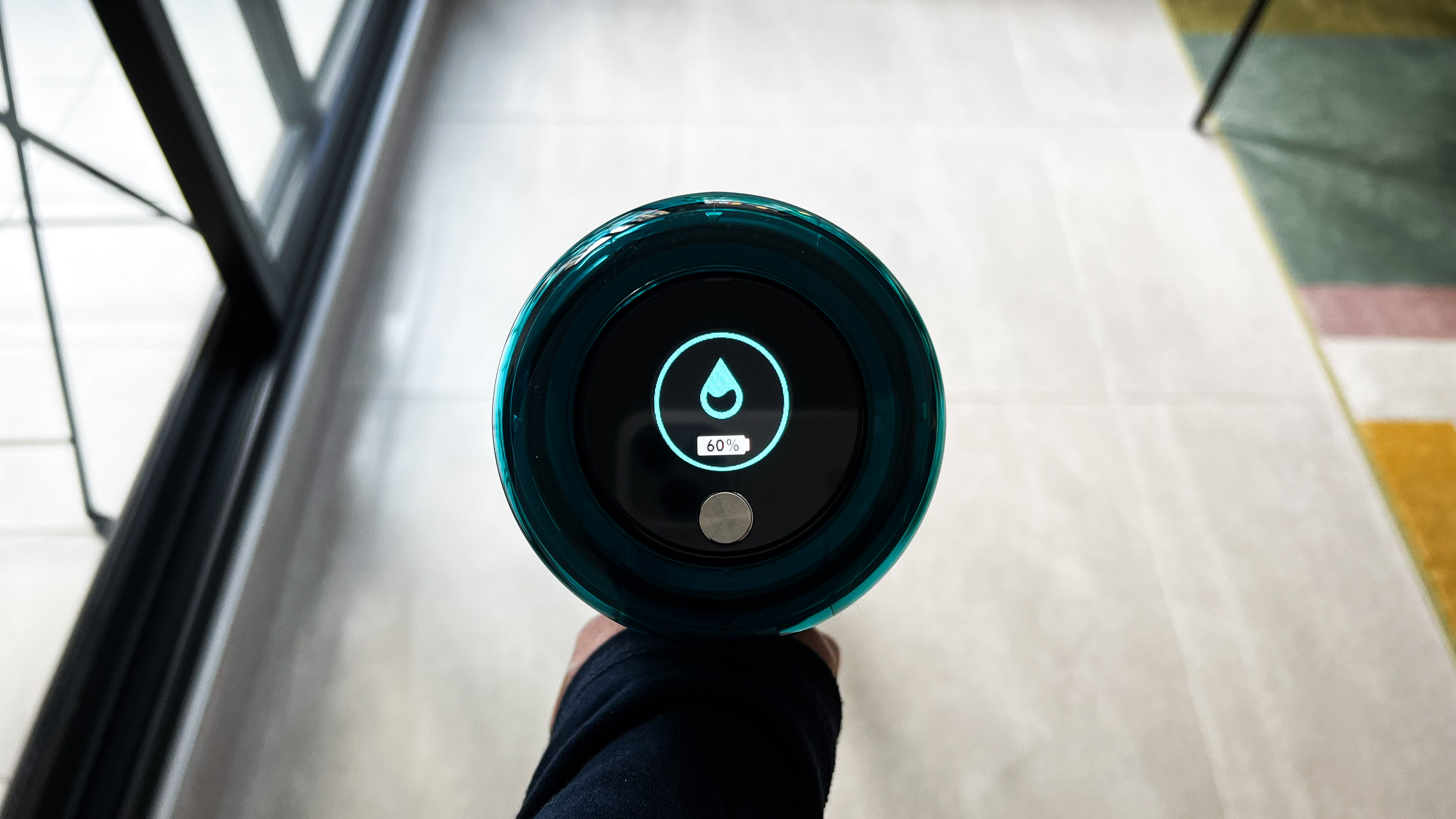
Both models feature a small LCD screen on which to display a range of information. The V15s uses this to deliver real-time reports on what’s being sucked up when in vacuum mode; in mop mode, it will display the percentage of clean water available, so you know when you’re running out. Unfortunately, it doesn’t convey when the otherwise hidden dirty water tank is nearing full, which exacerbates the spillage issue.
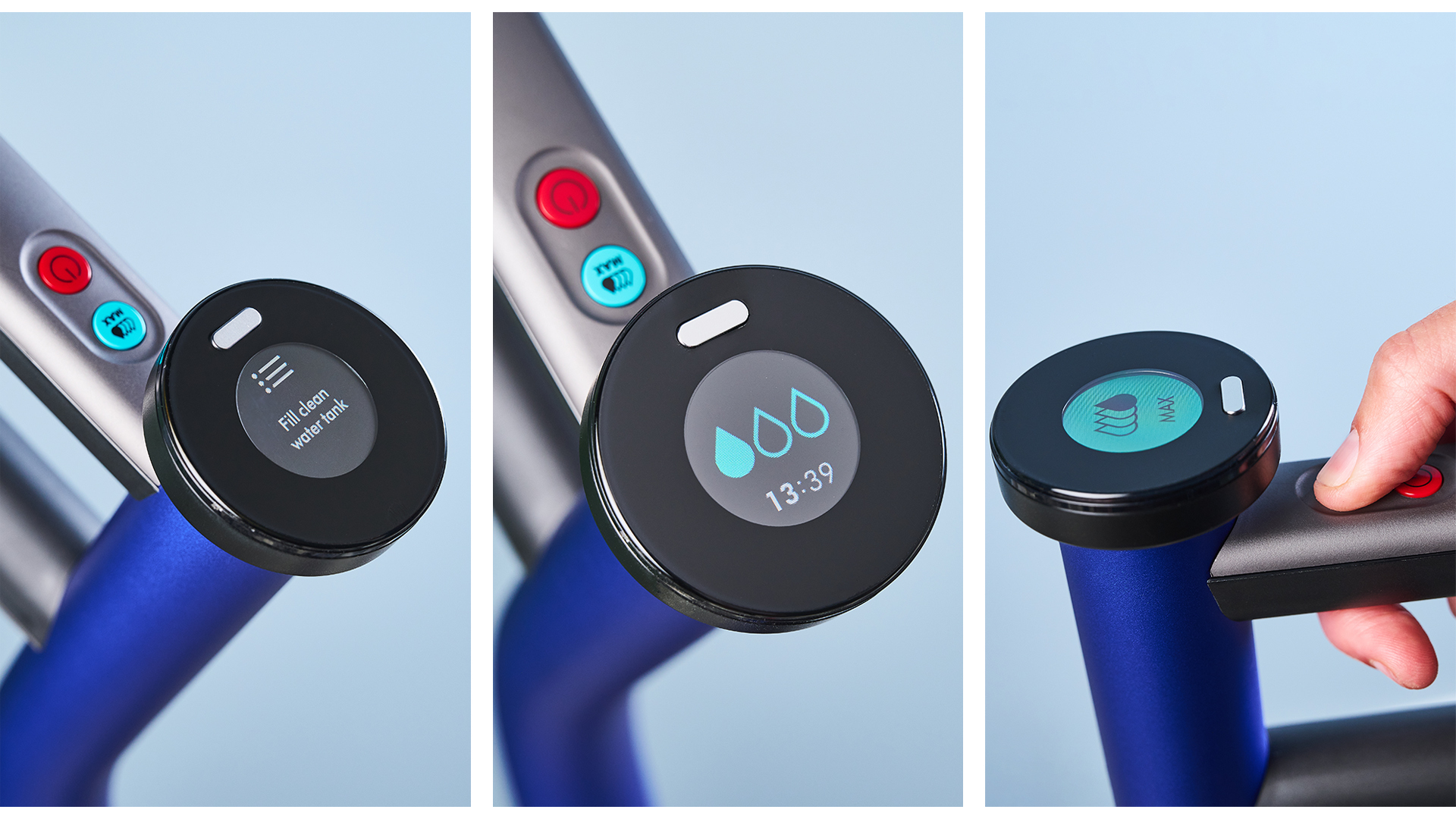
The WashG1 uses its screen to show the hydration mode you’re using, and also provides a countdown of how much battery life remains. It display graphics informing you if you need to complete any tasks – so prior to self-cleaning, it will let you know if you need to empty the solid waste tray, for example.
In terms of tank sensors, Dyson has gone the opposite way to the V15s, and will inform you when the WashG1’s dirty water tank is full but not when the clean water is empty. However, you can view this for yourself because the tank on this model is mounted on the handle.
Dock
You can dock the Submarine on a wall-mounted charger, to keep it out of the way. Plus, it comes with a drip tray for when the Submarine floorhead is wet. This is useful for catching spillages when removing the mop head, too. Alternatively, certain versions of the V15s (including our review model) come with a “Floor Dok Multi”, which is freestanding and includes spaces for all the different attachments.
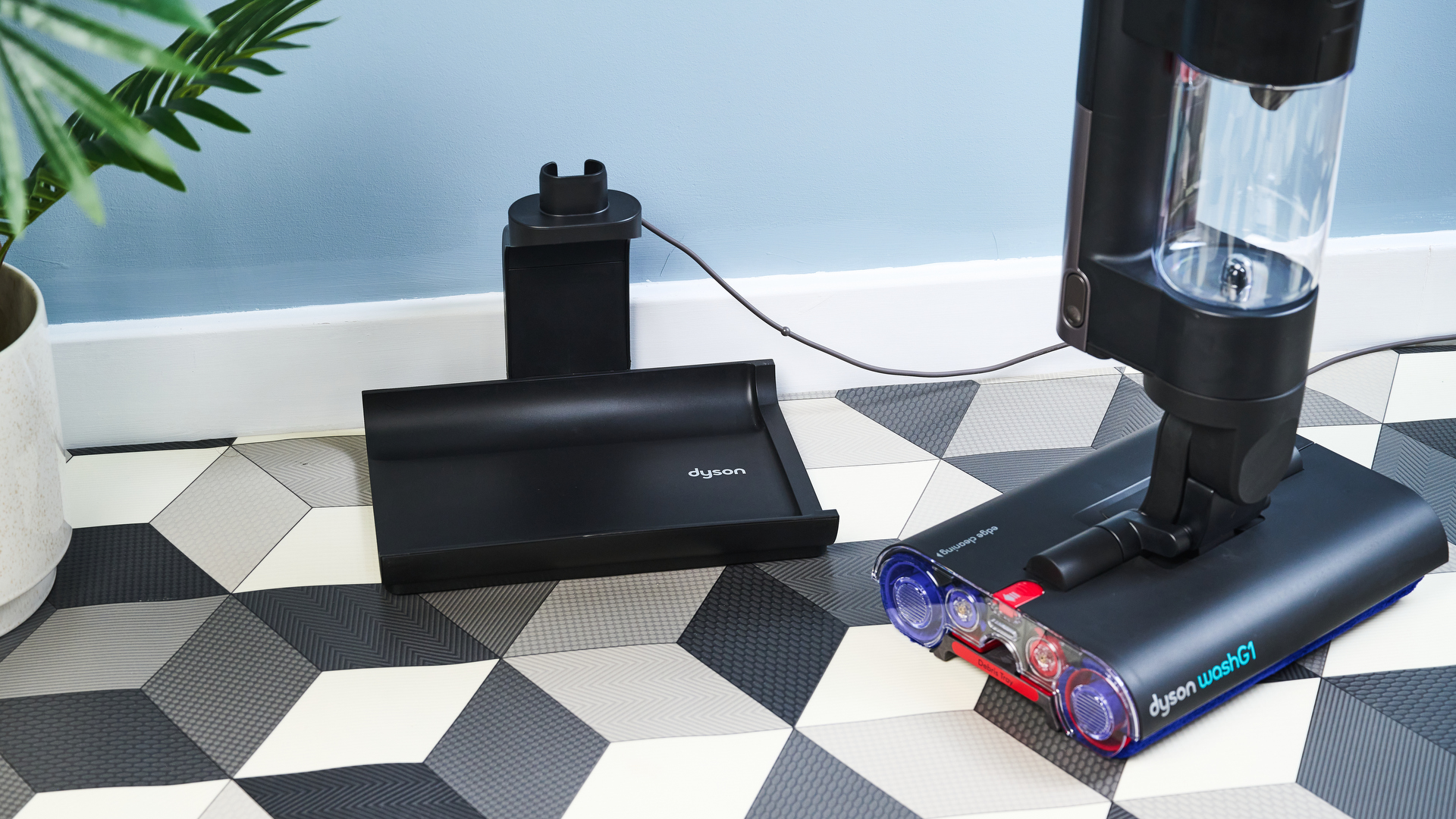
The WashG1 can’t be wall-mounted, although to its credit, the floor dock is very minimal – only marginally bigger than the floorhead, and very lightweight.
Dyson WashG1 vs V15s Detect Submarine: maintenance
- WashG1 has a self-clean mode; V15s does not
- Both have removable and washable rollers
- WashG1 also separates solid from liquid waste for easier disposal
The V15s Submarine’s mop roller is removable and fully washable. In fact, the mop floorhead comes apart and can be completely rinsed out. (For vacuuming, the dust cup is the easy-empty Dyson style one.)
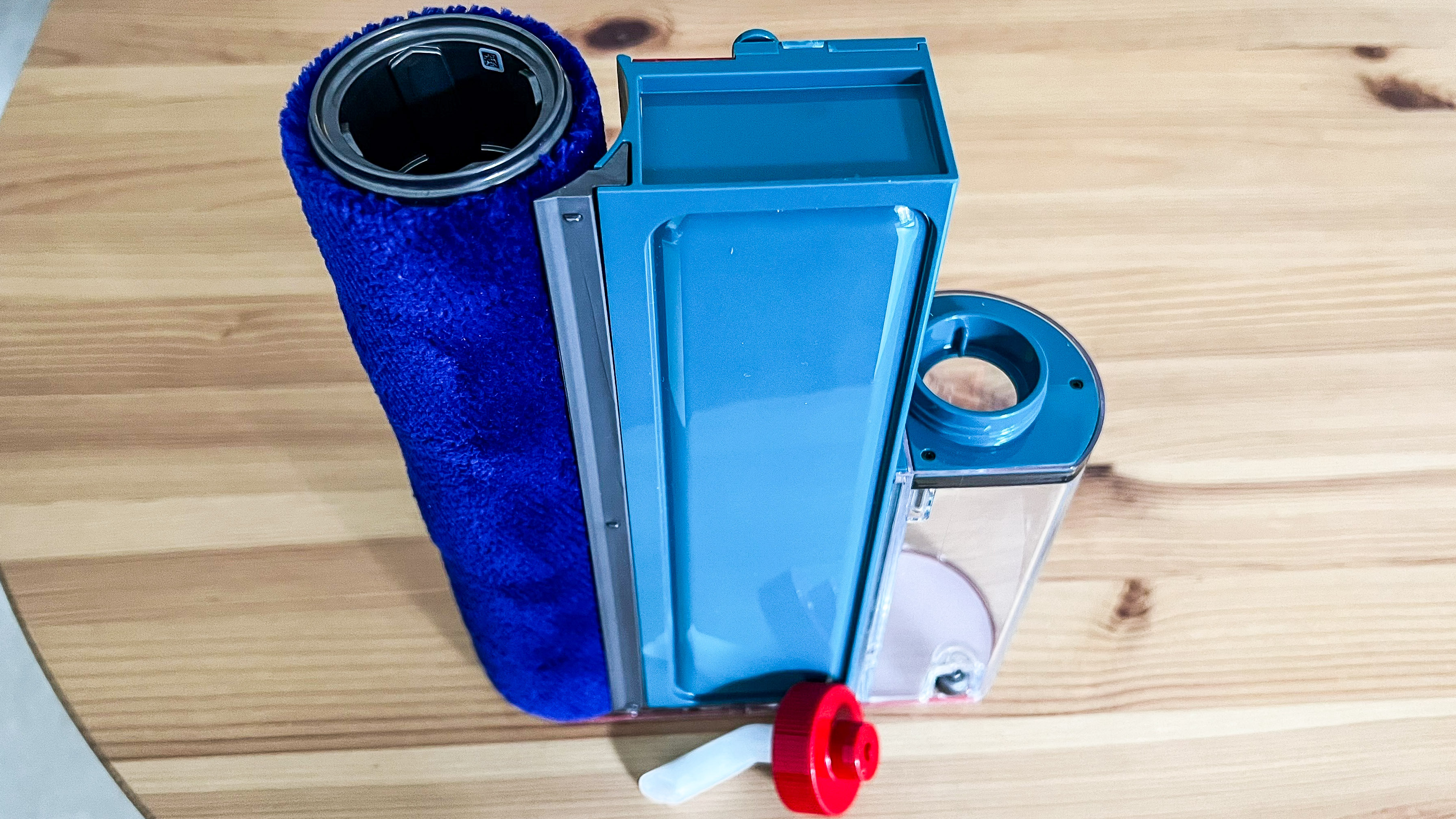
A point of difference is that the WashG1 comes with a self-clean cycle. Taking two minutes to run, it’s designed to be used after every mopping session, when you place the cleaner back on its dock. It runs clean water through the machine and uses a brush bar to clear any lingering solid debris from the rollers, then completes a no-water cycle to dry everything off a bit.
This needs to be supplemented with occasional deep cleans. For this, all the rollers can be removed and rinsed, as can the solid waste tray. The rest of the floorhead doesn’t come off, though. The water tanks are large enough to get your whole hand in, making them super easy to clean, and there are no sharp corners where grime can build up.
Dyson WashG1 vs V15s Detect Submarine: performance
- WashG1 has multiple modes, and can handle more challenging cleans
- Dirty water tank of V15s is open and spills easily when removed
- WashG1’s single-press operation is less fiddly than V15s’ trigger
Dyson always shines when it comes to maneuverability, and both the V15s Detect Submarine and Wash G1 are easy to drive around your home and great at pivoting around furniture and getting into corners. The mop parts are motorized, so they gently propel each machine forward in use, which helps negate the effect of the extra weight added by the water tanks.
The weight is distributed differently on each machine. The V15s has a heavy vacuum motor and battery at the top, whereas much of the WashG1’s weight is in the base. Operation of the WashG1 is simpler – you just press a button once, whereas on the V15s you need to compress the trigger continually as you clean.
The placement of the rollers is slightly better on the WashG1 versus the V15s Submarine. On the WashG1, the rollers fill almost the entire width and length of the floorhead, and there’s a thin cover that prevents wet marks on your baseboards. On the V15s, there’s slightly more of a gap along the short edges of the floorhead and the cover doesn’t drop down so far at the front, meaning you can end up with damp baseboards. However, both are generally very good at getting up close to the edges of rooms.
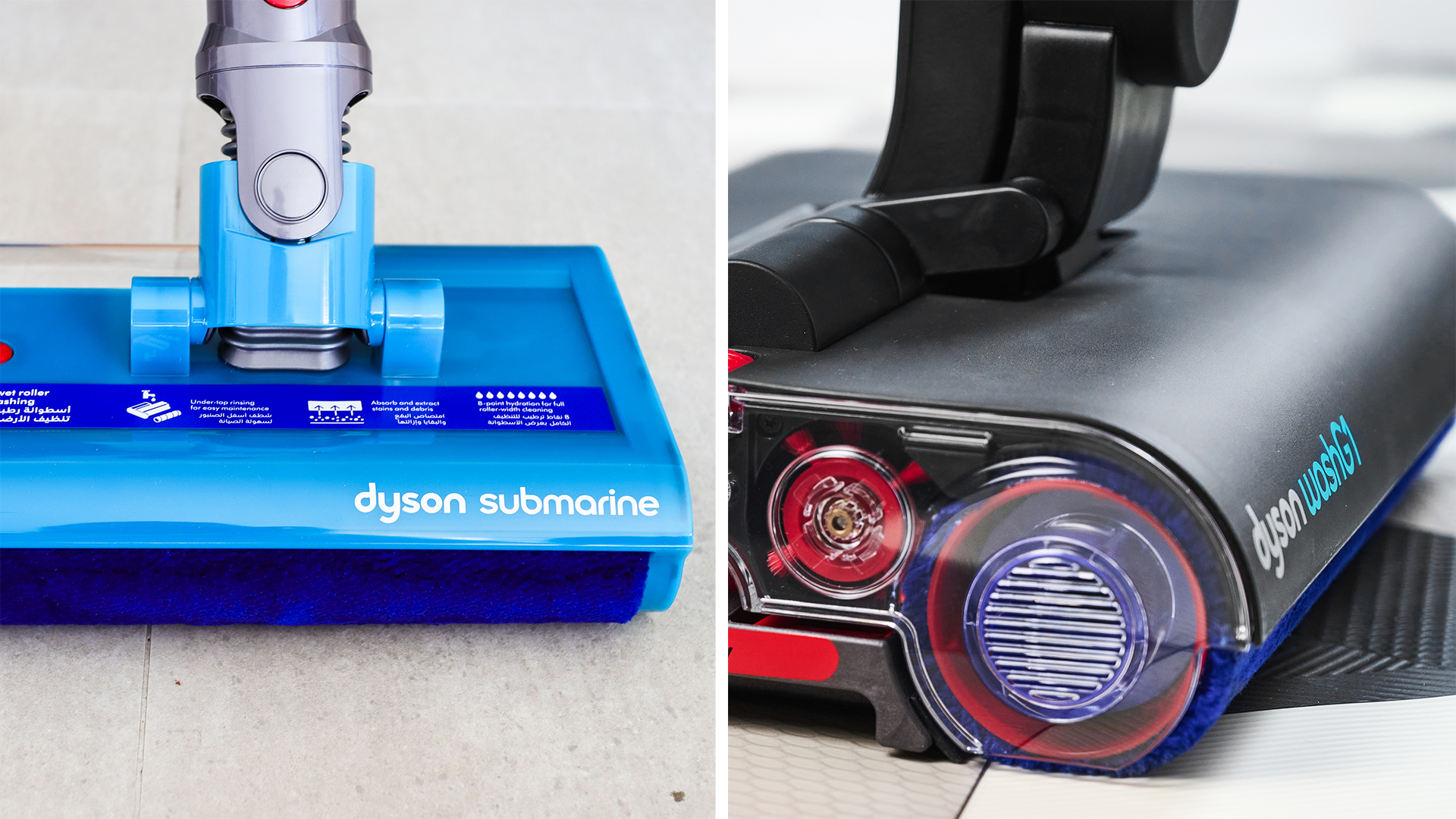
In terms of vacuuming, the V15s Detect Submarine boasts superb suction and a very powerful motor, and the vacuuming accessories are well designed and useful. An auto mode adjusts suction based on the dirt level on the floor, for a thorough, battery-efficient clean.
Since there’s no counterpoint on the WashG1, we won’t get too in depth on the vacuum performance here – head direct to our Dyson V15 Detect review (the same base model) for more detail including the results of our suction tests – but the short version is we have no complaints on this front. It’s one of the very best cordless vacuums on the market.
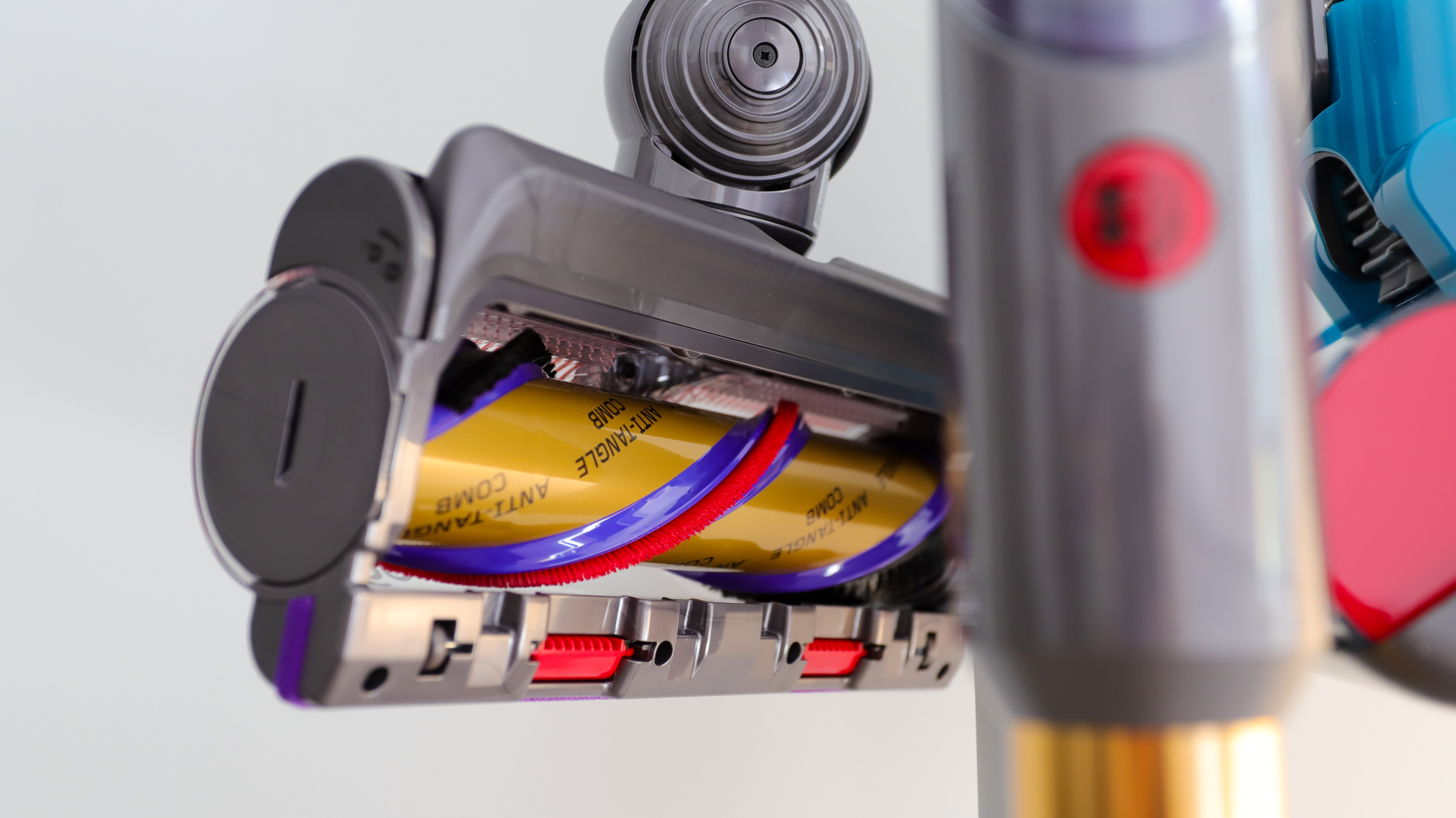
Moving on to mopping. Both the WashG1 and Dyson V15s Detect Submarine are great at tackling wet spills, small bits of debris, and mud. The WashG1 has multiple mopping modes and various rollers, which means it’s better at tackling tougher messes over the Submarine, which only has one mode and one roller.
The Submarine also isn’t really geared towards liquid and debris spillages – cereal and milk, for instance. If you do use it to tackle any small bits of solid waste, you’ll need to make sure you clean it out thoroughly afterwards. Also bear in mind that because solids and liquids aren’t separated, you’ll need to account for that when getting rid of waste. The WashG1, on the other hand, helpfully splits solid and liquid, so you can pour the liquid down the sink, and throw solid waste into the trash.
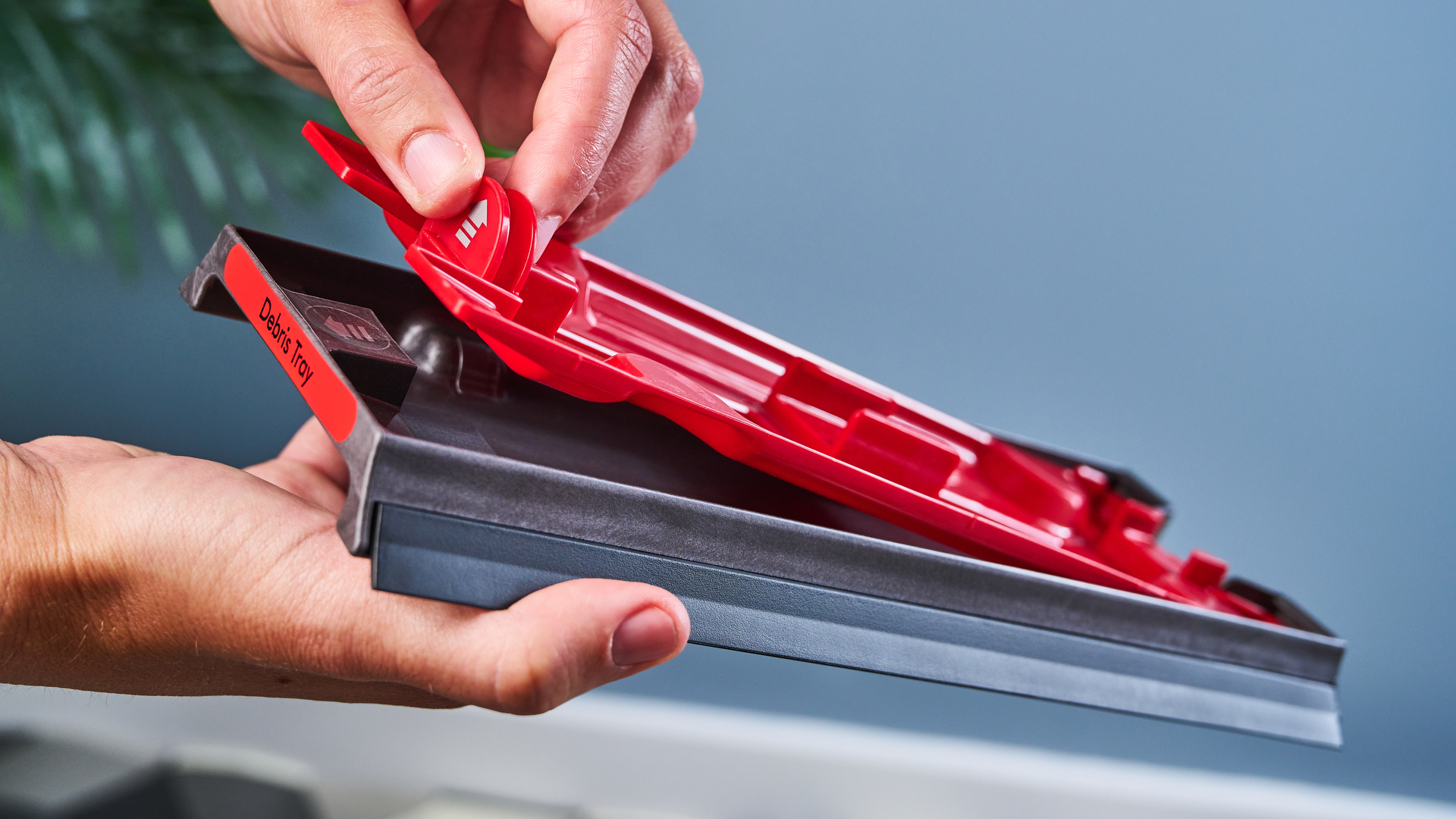
The mop functionality of both models can tackle dust, but not as efficiently as a vacuum cleaner – so if you have only hard floors and opt for a WashG1, you might still want a vacuum cleaner in your arsenal. The Submarine, however, has a vacuum floorhead(s) for that.
Neither cleaner is especially aggressive in its agitation – neither will “scrub: your floors, nor get into grouting cracks. In addition, both are really designed for use on perfectly flat floors, rather than those that might be uneven (this is true of the vast majority of wet cleaners).

Both the WashG1 and V15s are cordless cleaners. The WashG1’s maximum battery life is 35 minutes, which isn’t as long as your average cordless stick vac, but remains decent. The motor will automatically pause when the handle is clicked upright, so battery isn’t wasted. The V15s promises a maximum of 60 minutes of cleaning, but in vacuum mode. We don’t have a record of how long it will last in mopping mode, but we’d assume at least as long as the WashG1.


